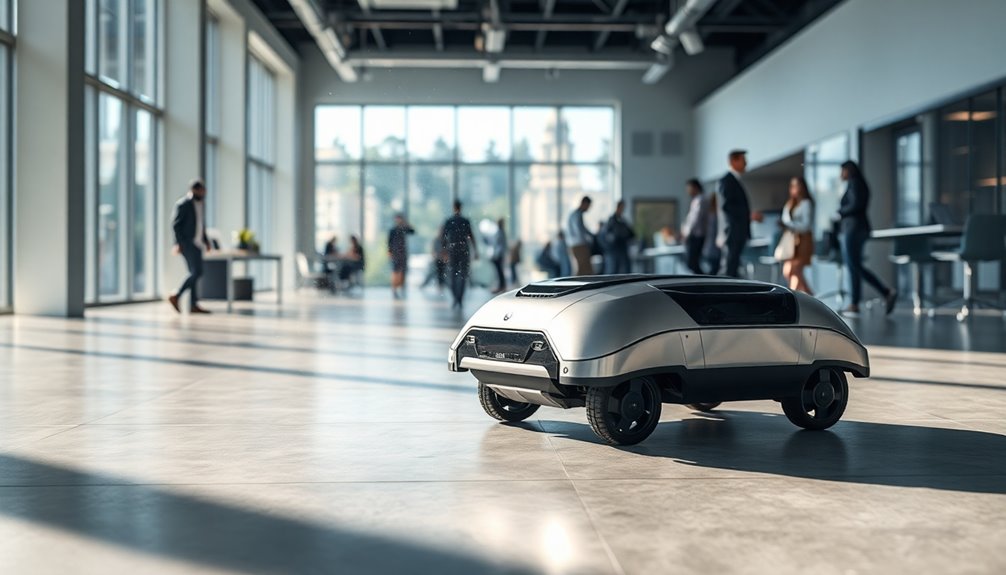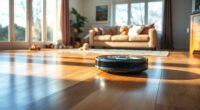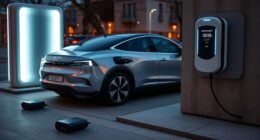The rise of robotic sweepers means smarter, more efficient cleaning for you. With advanced navigation and AI, these devices adapt to your space, tackling dirt and dander while you focus on what matters. Expect features like voice control, mopping capabilities, and improved battery life. However, be aware of some limitations, like struggles with complex layouts and regular maintenance needs. Discover how these innovations can transform your home cleaning experience in the sections that follow.
Key Takeaways
- Advances in laser navigation and AI will enhance robotic sweepers' efficiency and adaptability in various home environments.
- The global market for robotic sweepers is expected to grow significantly, driven by increasing demand for smart home integration.
- Enhanced smart features like app control and voice commands will make robotic sweepers easier to manage and more user-friendly.
- Future models are anticipated to include self-maintenance capabilities and advanced sensors for better dirt detection and cleaning.
- While robotic sweepers offer convenience, challenges include navigation issues and limited suction power for deep cleaning tasks.
Key Features of Robotic Sweepers
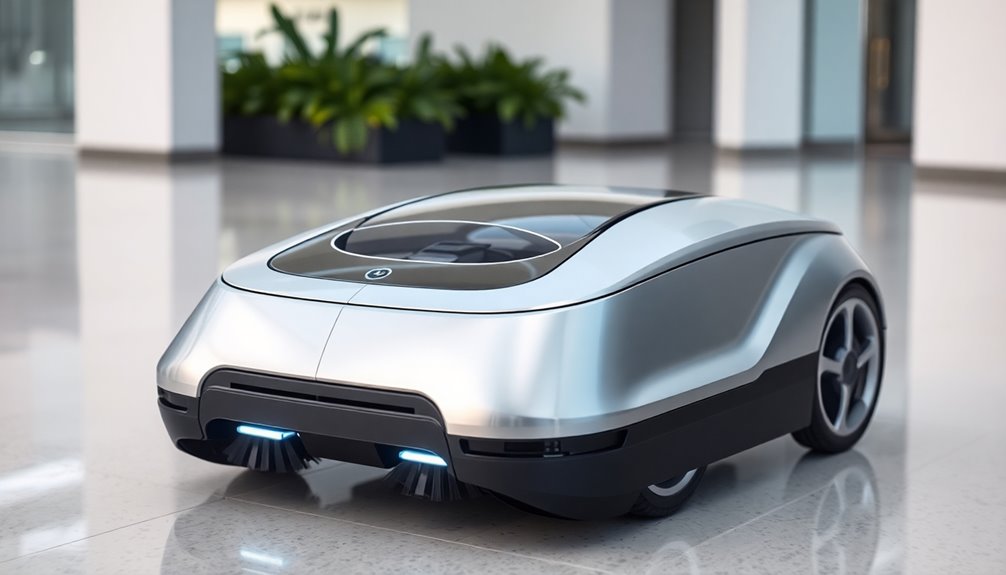
When it comes to robotic sweepers, understanding their key features can significantly enhance your cleaning experience.
First, consider the suction power; it's essential for effectively picking up dirt and debris.
Next, navigation technology helps the robot map your space and detect obstacles, ensuring efficient cleaning.
Battery life plays a crucial role too, as it determines how long you can run the device before needing a recharge.
Smart features like voice control and app integration allow for easy management from your smartphone.
If you want even more versatility, look for models with mopping capability.
Additional components like side roller brushes, filters, and obstacle detection sensors further improve your cleaning efficiency and ease of use, making your home cleaner than ever.
Advancements in Technology
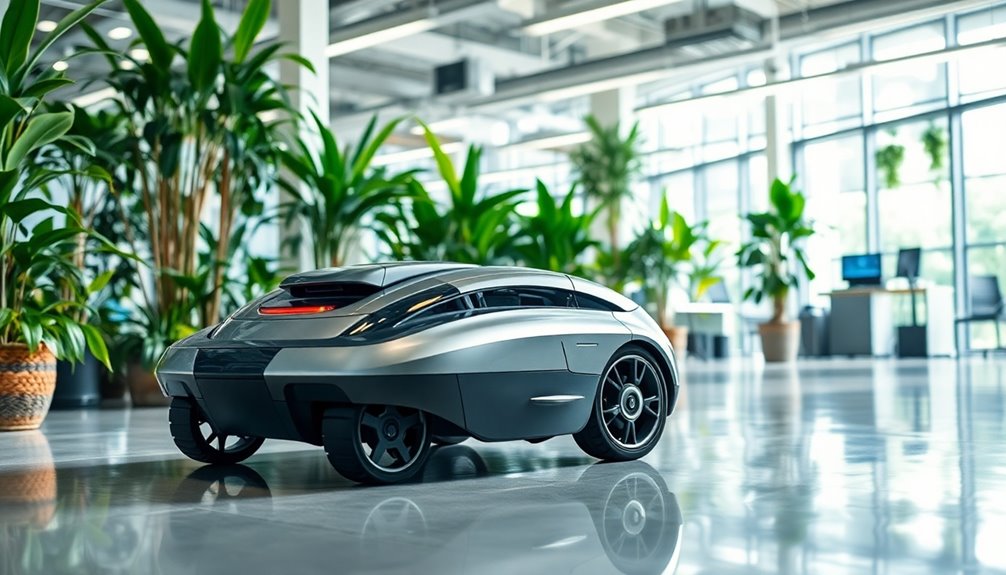
As technology evolves, robotic sweepers are becoming smarter and more efficient, revolutionizing the way you clean your home.
With advancements in laser navigation and computer vision, these devices map your space and avoid obstacles with precision. Real-time scanning lets them adapt to furniture and tight spots effortlessly.
AI and machine learning enable these sweepers to optimize cleaning based on your preferences and even learn from past sessions. You'll benefit from increased suction power and customizable modes that tackle specific messes. Future models will feature enhanced sensors to detect dirt types and adjust cleaning power accordingly.
Future developments promise self-maintenance and advanced autonomy, allowing your sweeper to empty itself and manage debris.
These innovations not only enhance cleaning performance but also integrate seamlessly with your smart home, making your life easier than ever.
Market Trends and Popularity
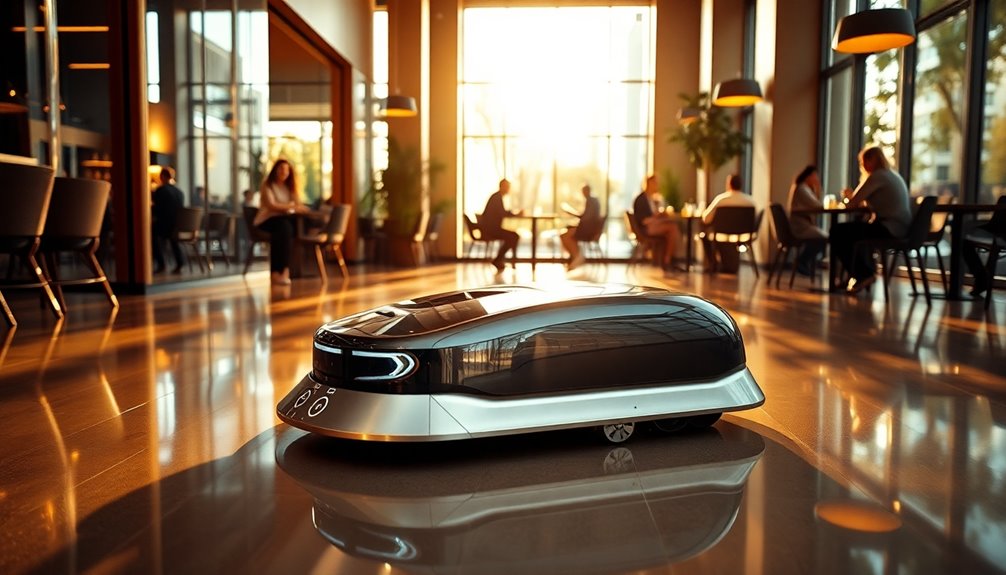
The rapid rise in smart home technology has significantly boosted the popularity of robotic sweepers, making them an essential addition to modern households.
The global market for these devices is set to grow from $9.37 billion in 2024 to $11.14 billion in 2025, driven by advancements like AI and advanced sensors. The market size is projected to grow due to changing lifestyles and technological innovations.
Urbanization and smaller living spaces further fuel demand, especially in regions like Asia-Pacific, where disposable incomes are rising.
The U.S. market also thrives on the push for smart home integration.
With a projected CAGR of 14.4% for residential robotic vacuums through 2033, it's clear that these innovative devices are here to stay, transforming how you approach cleaning your living space.
Benefits for Homeowners
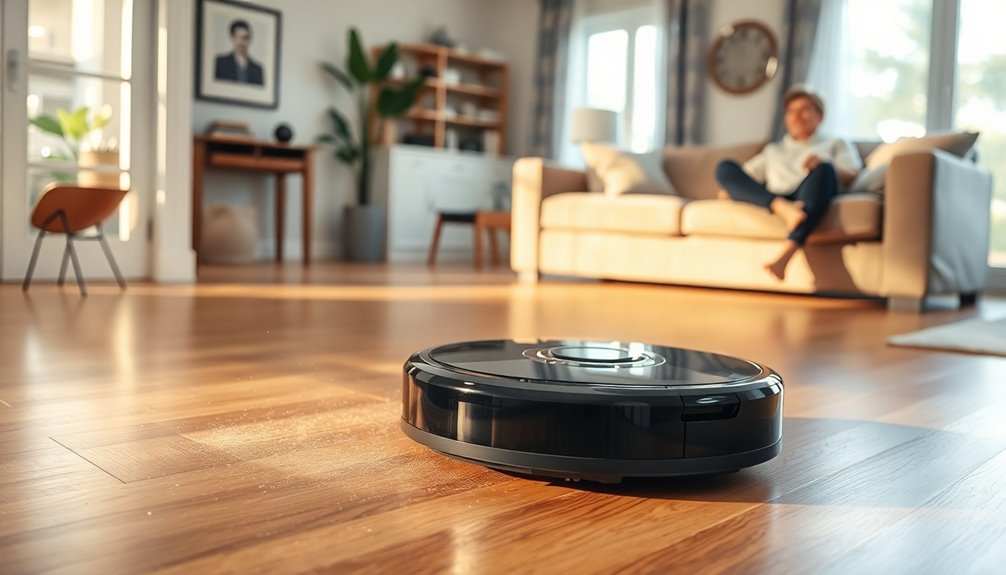
Robotic sweepers offer numerous advantages that can significantly enhance your home life. They save you time by automating cleaning tasks, letting you focus on what matters most. With scheduling features, you can easily fit cleaning into your busy routine, allowing the sweeper to tackle dirt while you're away or engaged in other activities. Their advanced sensors efficiently navigate various surfaces, reaching tight spaces and under furniture with ease. Additionally, great for pet owners, these devices manage hair and dander, improving indoor air quality and reducing allergens. Plus, they require less maintenance than traditional vacuums, making them a smart investment. Furthermore, many models come equipped with advanced cleaning technology, ensuring a thorough clean every time.
Challenges and Limitations
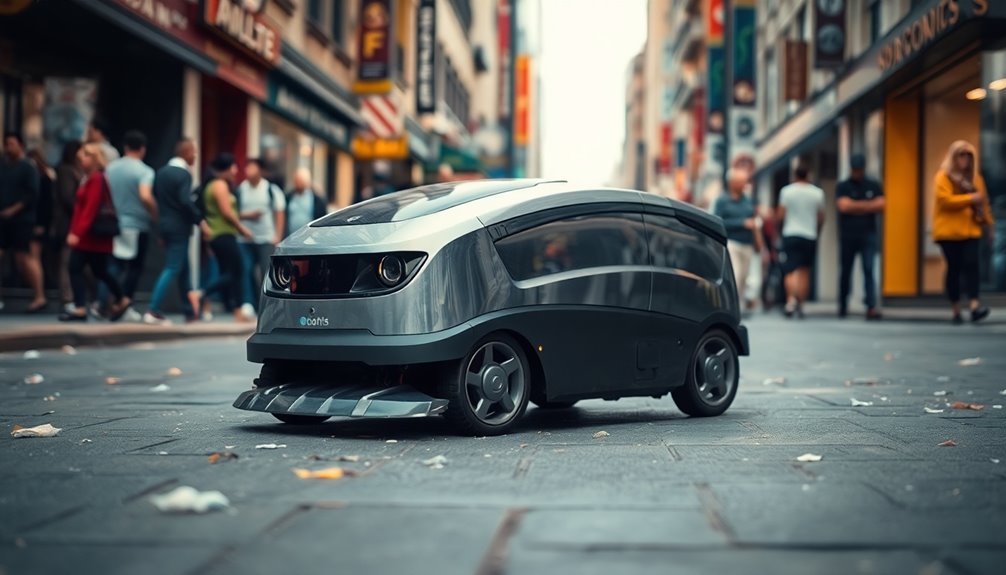
While robotic sweepers can streamline your cleaning routine, they also face several challenges that can hinder their effectiveness.
You may notice they struggle with complex room layouts, often getting stuck or missing areas due to limited obstacle detection. Their navigation systems can be inefficient, and they might have trouble transitioning between different floor types. Robot vacuums are effective at picking up surface dirt, but they often struggle with deeper cleaning tasks.
Additionally, their lower suction power makes deep cleaning less effective, especially on high-pile carpets or when dealing with pet hair.
Maintenance is another hurdle; you'll need to regularly empty dustbins and clean sensors.
Furthermore, their battery life may not cover larger spaces, and noise levels can disrupt your peace.
These limitations could affect how well they integrate into your daily cleaning routine.
Frequently Asked Questions
How Long Do Robotic Sweepers Typically Last Before Needing Replacement?
Robotic sweepers typically last anywhere from three to seven years, depending on the model and maintenance.
Basic models usually last about three years, while mid-range models can go four to five years. High-end models may exceed five years with proper care.
You can extend their lifespan by cleaning regularly, replacing worn parts, and storing them in a dry environment.
Keep an eye on performance signs to know when it's time for a replacement.
Can Robotic Sweepers Clean Multiple Rooms in One Go?
Did you know that robotic sweepers can clean up to 2,000 square feet on a single charge? Yes, they can efficiently tackle multiple rooms in one go.
By using advanced navigation and mapping capabilities, these devices systematically move through your home, adapting to different surfaces and room types.
You can even schedule them to clean specific areas on certain days, saving you time and effort while keeping your space spotless!
Are Robotic Sweepers Safe for Homes With Pets?
Yes, robotic sweepers can be safe for homes with pets. They often feature pet-friendly sensors that avoid animals, ensuring your pets aren't startled.
Their low noise operation keeps your furry friends calm, while advanced navigation systems prevent collisions with furniture and pets.
To enhance safety, gradually introduce the vacuum to your pets, supervise their interactions, and use virtual boundaries to keep them out of the cleaning area.
What Is the Average Battery Life of Robotic Sweepers?
Imagine your trusty robotic sweeper suddenly slowing down, leaving dust behind. You wonder, "What happened?"
Most robotic sweepers have a battery life of 1 to 2 years, but premium models can last up to 200 minutes in use. Factors like usage frequency and environmental conditions play a huge role.
To keep your device running longer, you'll want to calibrate it regularly and avoid letting the battery completely drain.
Do Robotic Sweepers Require Any Special Flooring to Operate Effectively?
Robotic sweepers don't require special flooring to operate effectively, but they perform best on smooth surfaces.
You'll find them effective on tile, wood, vinyl, and epoxy-coated concrete. However, they can struggle with high-pile carpets and uneven surfaces.
If you have a variety of floor types, look for models with adjustable suction and versatile brush systems.
Regular maintenance is also key to ensure optimal performance across different flooring options.
Conclusion
As robotic sweepers continue to evolve, you'll find them becoming an essential part of your cleaning routine. Did you know that the global market for robotic vacuum cleaners is expected to reach over $35 billion by 2027? This growth highlights their rising popularity and effectiveness. Embracing this technology not only saves you time but also keeps your home cleaner with minimal effort. So, get ready to enjoy a smarter, more efficient way to tackle household chores!
